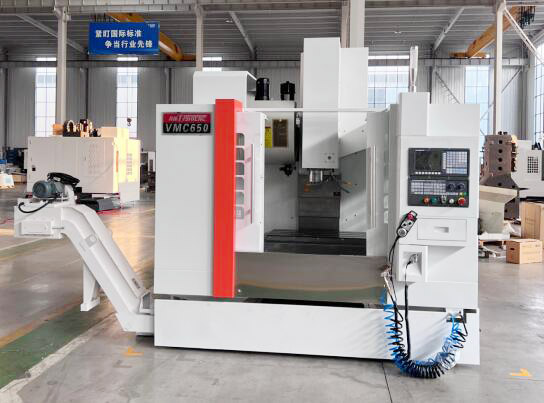Machining molds on machining centers is a common and efficient manufacturing method.The following are some key points about machining molds in machining centers:

| Preparation before processing | 1.Mould design and analysis | Carefully review the mould design drawings to understand the structure, dimensional accuracy requirements and surface quality requirements of the mould. Determine the difficult and critical parts of processing, and formulate a reasonable processing technology programme. |
| 2.Programming and simulation | Choose suitable tools and fixtures, according to the mould material, shape and processing requirements, choose tools with high hardness, wear resistance and cutting performance. The fixture should be able to firmly fix the mould to ensure the stability of the machining process. | |
| Precautions during processing | 1.Selection of cutting parameters | Select appropriate cutting parameters according to the mould material, tool type and processing requirements. The cutting speed, feed rate and depth of cut should match each other to ensure processing efficiency and tool life.
For mould materials with higher hardness, lower cutting speeds and feed speeds should be used to reduce tool wear. For parts with higher precision requirements, a smaller depth of cut and feed rate can be used to improve machining accuracy. |
| 2.Tool use and maintenance | Select the appropriate tool and install and adjust the tool according to the machining requirements. The tool should be installed firmly and reliably to avoid loosening and vibration.
During the machining process, pay attention to the wear of the tool and replace the worn tool in time. The degree of tool wear can be judged by observing the cutting state of the tool and measuring the machining dimensions. Regularly maintain and service the tool, including cleaning, sharpening and coating repair, etc., in order to extend the service life of the tool. |
|
| 3.Arrangement of processing sequence | Arrange the machining sequence reasonably according to the structure and machining requirements of the mould. Generally speaking, rough machining is carried out first to remove most of the residual quantity, and then semi-finishing and finishing are carried out to ensure the machining accuracy and surface quality.
During processing, care should be taken to avoid stress concentration and deformation. For large moulds, a layered processing method can be used to reduce cutting force and thermal deformation. |
|
| 4.Cooling and Lubrication | During the machining process, appropriate cooling and lubrication methods should be used to reduce the cutting temperature, reduce tool wear and improve the quality of the machined surface. Cutting fluid, air cooling or oil mist cooling can be used.
For some special mould materials, such as high-temperature alloys and titanium alloys, special cooling and lubrication methods are required to ensure processing quality. |
|
| Post-processing treatment | 1.Inspection and measurement | After processing is completed, the mould should be inspected and measured to ensure that the processing dimensions and accuracy meet the requirements. Measurements can be made using tools such as CMMs and gauges.
For some critical parts, non-destructive testing methods, such as ultrasonic testing and magnetic particle testing, can be used to ensure the quality and reliability of the mould. |
| 2.Surface treatment | According to the use requirements of the moulds, the processed moulds can be subjected to surface treatment, such as polishing, chrome plating, nitriding, etc., in order to improve the surface hardness, abrasion resistance and corrosion resistance of the moulds.
Surface treatment should be carried out after qualified inspection, and attention should be paid to the method and process of treatment to ensure the treatment effect and the quality of the mould. |
|
| 3.Assembly and commissioning | After the mould is processed, it should be assembled and debugged. When assembling, attention should be paid to the installation position and precision of each part of the mould to ensure the assembly quality of the mould.
When debugging, we should test the mould, check the working condition of the mould and the quality of forming, and find out and solve the problems in time. After the commissioning is qualified, the mould can be delivered for use. |
Shanghai ANTISHICNC is a professional manufacturer of machine centers, we have rich experience in production and processing,can recommend the right CNC milling machine for your product, and give the right advice on the use of the VMC machine center, can provide you with professional technical support. If you need CNC machine centers, welcome to contact Shanghai ANTISHICNC.Please send your inquiry or quesitons to contact@antsmachine.com for instant feedback.
Tags : machine center, VMC ,CNC milling machine, CNC machine centers.


